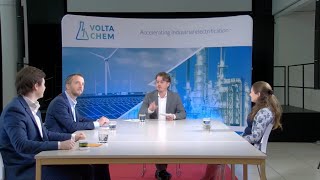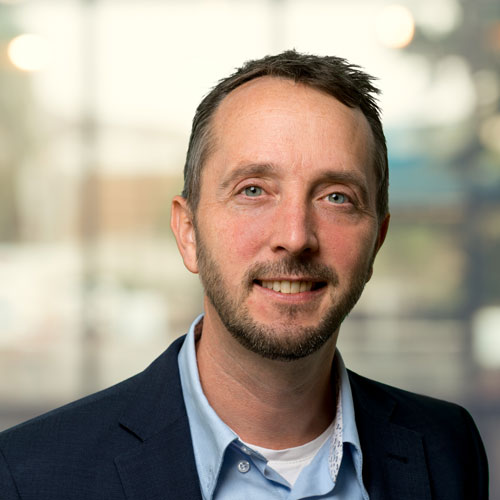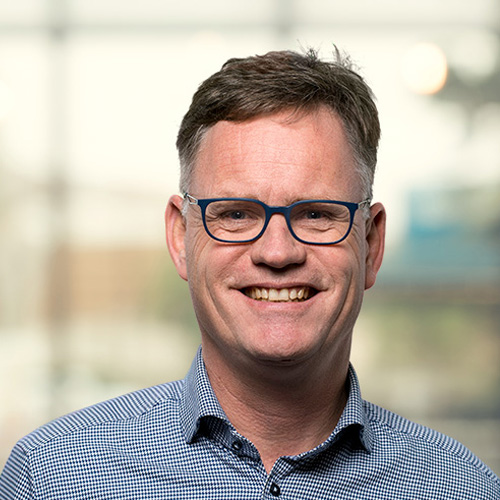

Insightful second edition of VoltaChem Power-2-X tour
14-07-2021 | Event report | P2Chemicals
Opportunities in electrochemical CO2 utilization: From high-value products to high-volume impact
 The second edition of VoltaChem’s virtual Power-2-X Tour on June 30 was devoted to a subject at the heart of VoltaChem's Power-2-Chemicals program line: the electrochemical conversion of CO2 into products with relevance to the chemical industry. About 225 viewers attended the livestream of the online talk show that provided valuable insights on technologies, business cases and development pathways of electrochemical CO2 utilization for producing high-value as well as high-volume chemicals.
The second edition of VoltaChem’s virtual Power-2-X Tour on June 30 was devoted to a subject at the heart of VoltaChem's Power-2-Chemicals program line: the electrochemical conversion of CO2 into products with relevance to the chemical industry. About 225 viewers attended the livestream of the online talk show that provided valuable insights on technologies, business cases and development pathways of electrochemical CO2 utilization for producing high-value as well as high-volume chemicals.
The interactive talk show was streamed live from the Research & Technology facilities at the Feluy, Belgium site of VoltaChem Community member TotalEnergies. Host of this second edition was Jerre Maas, joined by VoltaChem program director Martijn de Graaff who co-hosted the session. Table guests were Moritz Schreiber, project leader CO2 electroconversion at TotalEnergies and Anca Anastasopol, project manager Electrochemistry at VoltaChem. Erica Ording, team & technology lead of the VOLTA program at Avantium, joined via a video link. Complementary to the discussion at the table, online contributions were made by David Sinton of the University of Toronto, Wouter van Winden of DSM, and Karl Hauptmeier of Norsk e-Fuel. And throughout the program, interaction with the audience was established through polls and Q&A interludes.
Two sides to the issue
Introducing the subject, VoltaChem's Martijn de Graaff presented CO2 utilization as one of the most relevant future electrochemical conversions. It enables the renewables-based production of chemical building blocks and thus facilitates a circular carbon economy. However, he noted, that it a challenge to establish a business case that can compete with current fossil-based conversion routes.
To view the contribution of Martijn de Graaff, watch the talk show from here.
"In our collaborations over the past few years we have noticed that there are two sides to this issue. On the one hand there's the outlook towards high-volume commodity chemicals produced in an electrochemical manner at a large scale, which is a long-term vision that requires cooperation of large companies able to operate at such scales. On the other hand, we do already see opportunities in the shorter term for smaller scale electrochemical conversions resulting in products that have an intrinsic value, so that a proposition can be built without having to compete with existing fossil-based molecules."
The gist of the talk show was to explore these two sides of the issue and according to Martijn de Graaff: "Show that both have their relevance when it comes to industrial electrochemical conversion of CO2 into valuable products. "He underpinned the urgency by noticing that in view of reaching the climate targets the next step in the scaling-up of technology has to be taken within four to five years. "That is only possible if we have everybody on board, from experts in academia to materials suppliers, to equipment suppliers and to companies that will actually use the electrochemical technology." Or in the words of Anca Anastasopol: "Talk to each other, share the common problems, try to find common solutions and create value for the partners across the value chain. Without partners there's hardly any point in making efforts to scale up technology!"
High value, low volume
In the first part of the meeting the focus was on novel electrochemical CO2 conversions resulting in products with an intrinsic value. Although these might not yet seem to be relevant in terms of scale. They are considered as important stepping stone towards a large market penetration of CO2-based chemicals. Erica Ording of Avantium gave some insights into the efforts it takes to produce carboxylic acids, in particular formic acid, as building blocks towards other molecules.
To view the contribution of Erica Ording, watch the talk show from here.
Although the target is to go for commercialization in the next couple of years, important hurdles have to be taken. "Policies need to be adjusted, cheap green energy has to be available. And of course we have to demonstrate a small carbon footprint as the main selling point." What Ording sees as a major challenge is bridging the period of scale-up, as large investments have to be made. "It's crucial to line up all partners willing to support the longer term vision of CO2 utilization."
Another example of a low-volume, high-value application of CO2 conversion was presented in a video pitch by Wouter van Winden, principal scientist fermentation at the DSM Biotechnology Center. It revolves around integration with fermentation as a method to produce high-value products.
To view his video presentation, watch the talk show from here.
Many of DSMs fermentation processes use sugar which is in itself a renewable resource. However, the overall process is not climate neutral since fermentation and subsequent processing still result in CO2 emissions. DSM is trying to reduce that, amongst others by changing the energy household so that the sugar only serves as a feedstock and not as an energy source. The approach is such that CO2 from the fermentation off-gas is converted to formic acid, in a capture-integrated electrochemical conversion process driven by renewable electricity. The formic acid is then recycled into the fermentor as an energy source. As a result, the use of sugar as well as the emission of greenhouse gases can be reduced.
VoltaChem contributes to these efforts that, according to Anca Anastasopol, "help to show the potential of electrochemical CO2 reduction, also in an economical sense. And along the way we reverse the idea that CO2 is a waste product by using it as a resource to generate products with intrinsic value."
The issue of scarce materials
An interesting question from the audience came up regarding the role and influence of rare earth materials in technology development and cost projections. A good point, commented Erica Ording, although she doesn't think it will be a determining factor in future cost fitting. "But it underpins the basic principle that you should avoid using rare earth metals as much as possible given the issue of their availability." Anca Anastasopol added that this issue "triggers us to reconsider the whole process and find ways to replace the oxygen generating reaction with other reactions that do not need catalysts based on rare earth or precious metals. We have already worked on chlorine production as the counter reaction." Martijn de Graaff noted that the availability of metals in particular could become a problem when scaling up technology towards the required size. "This will first become apparent with the production of hydrogen. So we are already searching for alternatives."
High-volume chemicals
The talk show continued on the subject of CO2 conversion towards bulk chemicals produced in very high volumes. Prof. David Sinton of the University of Toronto was the first to contribute to this topic with a presentation of his research on electrocatalytic conversion of CO2 to ethylene.
To view the contribution of Prof. Sinton, watch the talk show from here.
Prof. Sintons slides are available here.
David Sinton is a Professor at the Mechanical and Industrial Engineering department at the University of Toronto and Canada Research Chair. He presented work that was carried out in collaboration with TotalEnergies in the development of membrane-electrode assemblies (MEAs) for the production of the C2 components ethylene and ethanol from CO2. He showed the Toronto pilot plant for CO2 conversion with a 40.000 cm2 membrane stack - the largest CO2 to C2 MEA pilot in the world - running 24/7 for multiple months. He provided insight in a range of efforts that have been made to improve the conversion in all aspects: productivity, efficiency and stability. "We have learned lots of lessons here, but there are still lots of work to do. Upstream, in the stack, as well as downstream."
Furthermore, Prof. Sinton showed work on a tandem electrolyzer system where the MEA cell is preceded by a SOEC cell. He reported good stabilities and efficiencies using commercially available cells, while using only half of the amount of electric energy needed per tonne of ethylene in comparison to the 'MEA only' conversion. "The question of course is how to have it all", said Prof. Sinton. "You have to come up with a system that satisfies the requirements for a successful business case and is able to convert cheap, low purity carbon dioxide into high purity, valuable products with a large market potential. This really is a multi-sector challenge! We are now cooperating with TotalEnergies but we are open to contribution from other companies, especially in the field of electrodes and systems manufacture."
In the discussion that followed, Anca Anastasopol remarked on the status of the Sinton group: "Their papers are always joyfully received at our laboratory. It provides us with relevant perspectives and understandings of materials and electrode processes. It gives you that spark to generate new ideas and develop new perspectives for improvement." Martijn de Graaff commented on the "really creative" efforts to combine SOEC with MEA electrolyzers: "This integrates two different domains of operational parameters as well as expertise. It is a very nice effort to combine the best of both worlds. These kind of approaches are necessary to arrive at electrochemical systems that work and that ultimately are able to fulfil relevant market requirements."
Industrial efforts in CO2 conversion
According to Moritz Schreiber of TotalEnergies, "the University of Toronto is a great partner in helping us to understand this technology so that we are able to evaluate it, assess its potential at the large scale that is ultimately required, and to define the challenges that we have to address before we can get there. “we also work together with partners like TNO, Collège de France and Sandford.” After a short intermezzo on the VoltaChem Delft laboratory facilities, Schreiber continued with a presentation on the efforts of TotalEnergies in the field of CO2 conversion towards chemicals and fuels.
To view the presentation of TotalEnergies, watch the talk show from here.
High-volume product applications, a long-term businesses case
Schreiber mentioned that it is TotalEnergies’ ambition to become net zero by 2050 together with the production and also the products used by their customers. See: CO2 Electro-conversion to ethylene. Schreiber underpinned that scaling up towards a meaningful output will take something of 20-25 years, "so for us it is very important to evaluate and assess the technology now, make the right choices and find the right partners". Also mentioned was that they have surrounding conditions to be met. They need a large amount of green and cheap energy. For CO2 electro-conversion they need a large amount of CO2. Which will the source? Industrial, bio-based or direct air capture? Earlier in the meeting he had already underpinned the magnitude of the challenge with a few figures: Learning from hydrogen production, scaling up with a factor of 10 is expected to take about 4 years. This development curve would lead to CO2 conversion equipment of some 10 MW capacity around 2035. "To put things in perspective: if you would assess a common oil refinery in these terms you are talking about 10 GW. Even in 2035 we would still be a factor of 1000 away from such a target." Adding to that, Schreiber noted that TotalEnergies is at the moment not discarding any other development trajectory. "At the moment we have to keep all doors open and consider all options. We're constantly talking to partners and adapting our vision regarding the pathways ahead of us."
The final video presentation was from Karl Hautpmeier, Managing director of Norsk e-Fuel that is developing a power-2-liquids approach where electrochemical conversion of water and CO2 leads to syngas (hydrogen and carbon monoxide) and subsequent Fischer-Tropsch conversion into 'regular' products now being produced in fossil-originating pathways. One of the examples are jet-fuels.
To view the contribution of Karl Hauptmeier, watch the talk show from here.
According to Hauptmeier, this concept revolves around two game changing technologies. The first is direct air capture of CO2, resulting in a technology that can be applied anywhere in the world and is independent on industrial point sources. The second is high-temperature Solid Oxide Electrolyzers which allow for the very efficient production of syngas and thus a very efficient overall production route. He described how Norsk e-Fuel is working on an industrial demonstrator as the first step towards full-scale deployment. "If we do not do this now, Europe will lose its position at the forefront of this technological revolution."
Hauptmeier defined the key challenge as establishing how to achieve the necessary scale to drive down costs. To which Martijn de Graaf commented that every phase in the development of new technology has its own cost and risk profile. So depending on the phase you need different type of investors and funding mechanisms enabling the next step. What's interesting about Norsk e-Fuel is that they have decided to establish a company to enable taking the next development steps." According to Moritz Schreiber they have the right approach to have the pilot plants, to showcase the technology. With scaling-up you identify new challenges you have to address.
Greening the chemical industry
In the discussion that ensued after the presentations, Moritz Schreiber managed to capture the whole matter in one compelling statement: "Over the last century society has developed the chemical industry as we now know it, and in the coming century the task at hand is to make it green. That requires participation of whole new sectors, the most obvious one being the electricity sector. It is important to connect all relevant stakeholders as early as possible and tackle this together. So that is why to us a platform such as VoltaChem platform is of importance."
To view the discussion including viewers’ questions and the final wrap-up, watch the talk show from here.
Power-2-X Tour
The VoltaChem Power-2-X Tour is a series of four online events which will provide a deep dive into key developments in industrial electrification. With the aim to inform, inspire, and in the long run to help to make sensible decisions on future investments that will make the chemical industry more sustainable.
Upcoming editions
The tour will continue with talk shows highlighting the strategic topics of the VoltaChem program:
Power-2-X Tour #3: September 29 | Next-generation water electrolysis: Cost-effective hydrogen production enabled by high-tech innovations
Industrialization of PEM electrolysis in partnership with industry. Better economics, increasing electrochemical efficiency, extending materials life under operational conditions, avoiding scarce resources such as iridium. (Power-2-Hydrogen)
Power-2-X Tour #4: November 18 | Upcoming Power-2-X technologies: Plasma pyrolysis
Exploration and development of future technologies such as Solid Oxide Electrolyzers that operate at high temperatures (Power-2-Hydrogen), and plasma pyrolysis of gases to produce hydrogen and unsaturated hydrocarbons as chemical building blocks (Power-2-Chemicals).
Past edition
Power-2-X Tour #1: March 31 | Viable Value Chains - The Northwest European industry region as electrified supercluster
Integrating renewable energy and feedstock. Where will the industry of north-western Europe be heading. What is going to be produced where, with what and how? (Power-2-Integrate) Read the report here.
Share this page:
Contact:

Martijn de Graaff
Program Director VoltaChem
+31 6 222 608 71
martijn.degraaff@voltachem.com
LinkedIn
Reinier Grimbergen
Principal Consultant Power-2-X
+31 6 271 438 18
reinier.grimbergen@voltachem.com
LinkedIn